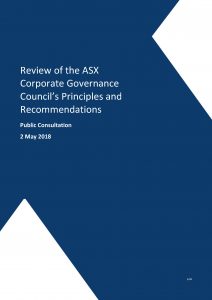
One of the most important occupational health and safety (OHS) guidances released the last couple of years is the Safe Work Australia (SWA) guide “Work-related psychological health and safety: A systematic approach to meeting your duties“, but its significance is not being universally embraced.
Recently Australian law firm, Minter Ellison, released an

 The
The 
 Dr Rebecca Michalak
Dr Rebecca Michalak With little surprise, at the Australian Labor Party (ALP) Conference in Victoria on 26 May 2018, Premier
With little surprise, at the Australian Labor Party (ALP) Conference in Victoria on 26 May 2018, Premier 
